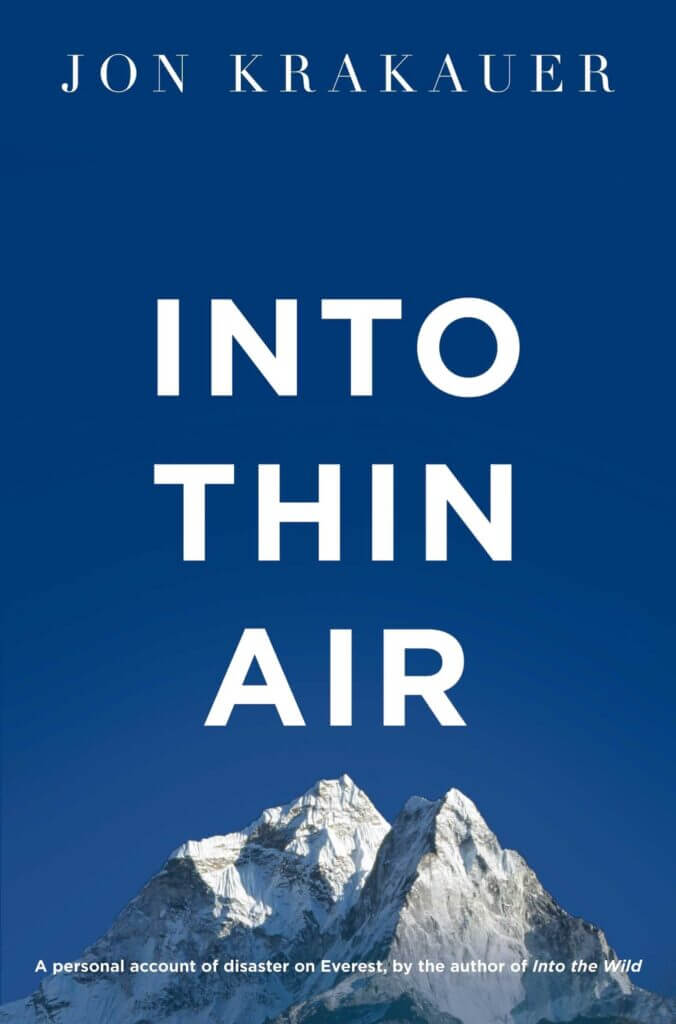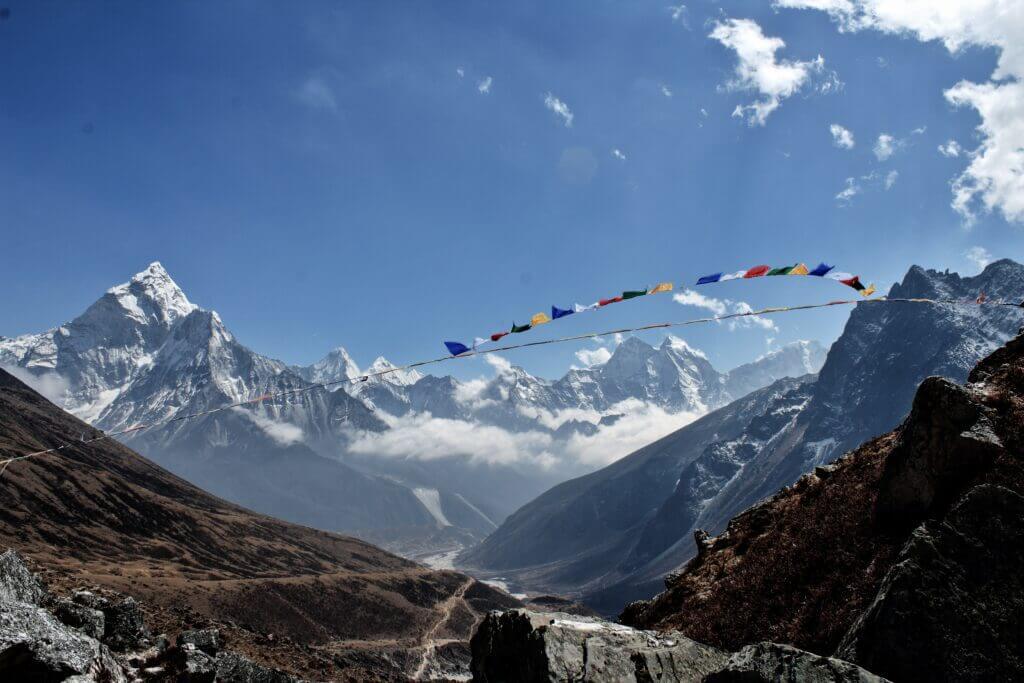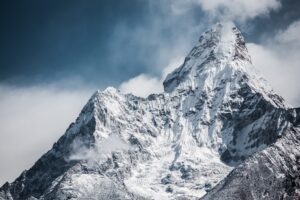“Into Thin Air: A Personal Account of the Mt. Everest Disaster” is more than just a bestseller. It’s a stark journey through the lethal storm of 1996 that forever marked the history of Mount Everest. This gripping narrative is written by Jon Krakauer, a respected nonfiction author and participant in the ill-fated expedition. The book offers a unique vantage point on a catastrophe that shattered lives, careers, and norms within the climbing community.
In the spotlight are esteemed guides Rob Hall and Scott Fischer, whose skills and experience couldn’t shield them from the unforgiving storm. Hall, a proven leader, and Fischer, a daring mountaineer, become central figures in a tale that questions not just individual decisions but the broader implications of the competitive commercialization of Everest.
Krakauer’s first-hand account is a sad reflection on risk, resilience, and respect for nature’s might. It is meticulously detailed, intensely personal, and profoundly enlightening. “Into Thin Air” is a reminder of the thin line that separates triumph from tragedy on the world’s highest peak.

Summary of the Book
In “Into Thin Air,” Jon Krakauer vividly recounts the brutal and tragic 1996 Everest expedition. This is where he joined as part of a professional assignment for Outside Magazine. Initially tasked with documenting the commercialism on Everest, Krakauer’s ambition drove him to witness and participate in the climb. Inadvertently, it also aligned his fate with the deadliest Everest expedition on record.
The narrative delivers a chilling timeline of events unfurled on the merciless mountain terrain. Krakauer, a member of the Adventure Consultants group led by Rob Hall, embarked on a journey meticulously broken down into camps for acclimatization, culminating in the final push towards the summit in early May.
Krakauer’s description of his climbing cohorts makes the unfolding drama tangible. It also includes their shared struggles with altitude acclimatization and varying expertise levels. Unfortunately, death emerges as an unwelcome companion on their expedition, appearing in Chapter 11. Moving forward, it just becomes more familiar as the narrative progresses.
The summit push marked the unravelling of the expedition. Despite an imposed 2 pm turn-around time, some climbers, including guide Rob Hall, reached the summit much later. This was when a sudden storm trapped them. Krakauer, who had successfully descended, was unaware of the life-threatening conditions faced by his companions. It included the desperate struggles of Hall, fellow climber Doug Hansen, and a competing group led by Scott Fischer.
Details of the expedition’s harrowing end – stranded climbers, futile rescue attempts, the miraculous survival of Beck Weathers despite severe frostbite injuries, and twelve fatalities during that season – are recounted with raw honesty. Fischer and Hall succumbed on the mountain, leaving a legacy intertwined with the 1996 Everest disaster.
Further Details – Krakauer’s Survival Guilt & Insights
Krakauer’s narrative then takes a contemplative turn. Post-expedition, he grapples with survivor’s guilt and a transformed perspective on mortality. His journalistic instincts, however, remain intact. Armed with new insights, research, and interviews with survivors, he delves into a comprehensive and accurate retelling of the events. This is despite being aware of the pain and anger his book might stir among the victims’ friends and families.
“Into Thin Air” encapsulates Krakauer’s lifelong fascination with Everest, rekindled against his better judgment and culminating in a sobering experience. He analyzes the allure of the mountain that lures climbers into dismissing inherent risks and weathering extreme hardships. Powered by his robust reportage and emotional clarity, Krakauer’s first-hand account is a poignant testimony to the events that unfolded at the world’s highest peak in May 1996. His critique of competitive guiding agencies compromising safety for summits adds a sharp edge to his narrative. It also etches a chilling reminder of the price of ambition in the face of nature’s unpredictable might.
Krakauer’s “Into Thin Air” and the Mountaineering Controversy

“Into Thin Air” has courted controversy and critique, becoming a subject of hot debate within the mountaineering community. Krakauer’s portrayal of Russian climber and guide Anatoli Boukreev is central to these critiques. Boukreev, an experienced high-altitude climber working for Scott Fischer‘s expedition, decided to descend the summit ahead of his clients. It is a move that Krakauer scrutinized in his account.
Krakauer’s narrative raises questions about Boukreev’s decision not to use supplementary oxygen, mountaineering gear, and client interactions. He acknowledges Boukreev’s unquestionable heroism in saving lives during the disaster. However, Krakauer’s also concerns his decisions sparked a rebuttal from the Russian guide himself in his 1997 book, “The Climb.”
Fellow mountaineer Galen Rowell weighed in on the debate, pointing out inconsistencies in Krakauer’s account. He also defends Boukreev’s actions as “nothing short of heroic.” Rowell contended that Boukreev’s decision to descend ahead of clients was strategic. It allowed him to rest, hydrate, and be prepared for an emergency — a lifesaving move.
Criticism also arose around Krakauer’s alleged omission of crucial information regarding weather forecasts. Detractors argue that his account failed to acknowledge that the team members received accurate daily weather forecasts and knew about the impending storm.
In the 1999 paperback edition of “Into Thin Air,” Krakauer addressed these criticisms in a detailed postscript. He underscored the book’s role as a space for continued dialogue and reflection on the fateful 1996 Everest disaster.
The Cinematic Journey of “Into Thin Air”
Jon Krakauer‘s “Into Thin Air” is a pinnacle in the gripping world of high-altitude survival literature. Sony procured the film rights shortly after the book’s publication, underscoring the tale’s powerful resonance. The 1997 movie, “Into Thin Air: Death on Everest”, features Peter Horton and Christopher McDonald as Fischer and Krakauer, respectively. The book and the film echo similar editorial viewpoints regarding the tragic event’s underlying causes. However, specific details concerning responsibility diverge noticeably in the on-screen adaptation.
In 2015, another cinematic depiction of the same ill-fated expedition emerged. Director Baltasar Kormákur’s “Everest” recreated the harrowing events with Michael Kelly portraying Krakauer. Intriguingly, despite the parallel narratives, Kormákur asserted that his film did not draw inspiration from Krakauer’s book.
A testament to its evocative storytelling, “Everest” attracted a stellar ensemble cast, including Jason Clarke, Jake Gyllenhaal, Josh Brolin, and Keira Knightley. The film highlights the desperate survival attempts of two expedition groups Rob Hall and Scott Fischer led. It essentially offers another lens to view the 1996 Mount Everest disaster.
The 72nd Venice International Film Festival premiered “Everest” on September 2, 2015, before it hit theatres worldwide. First released in IMAX 3D in the UK, the film was later shown in various formats across the globe. With a return of $203 million against a $55 million budget, the film’s success mirrored the critical acclaim it received. This offered yet another testament to the enduring resonance of the tragic Everest expedition in 1996.
Krakauer’s Everest Narrative

In the wake of his account of the catastrophic Everest expedition, Jon Krakauer confronted the distress stirred among the bereaved by his article in “Outside” Magazine. Despite intending to recount the tragic event comprehensively, Krakauer’s words unintentionally inflicted pain on grieving people.
Recognizing this, Krakauer conveyed his profound apologies, maintaining his aim was to depict the realities of the dangerous expedition, not to exacerbate the wounds of those affected. Simultaneously, he extended his sincere condolences to the extensive list of those impacted by the incident and expressed gratitude to those who lent their support. This reflection demonstrates the precarious balance in narrating such impactful stories, acknowledging the possible pain inflicted and the essential nature of sharing the daunting journey on Everest.


